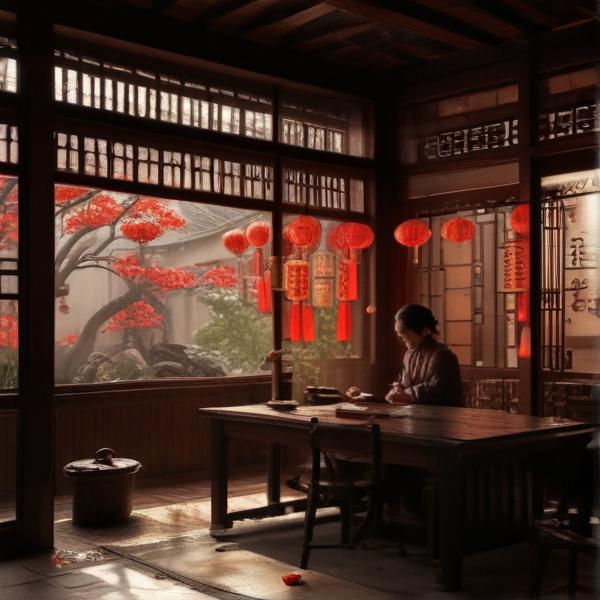基本信息 (Basic Information)
含义与用法 (Meanings & Usage)
中文核心释义 (Core Chinese Meaning): 环绕、包围,用围墙、篱笆等把空间隔起来,也可指包裹、封锁等。
英文核心释义 (Core English Meaning): to surround, to encircle, to enclose (such as with a wall or fence); also means to besiege or wrap around.
象形意义 / 为何这么写 (Pictographic Meaning / Writing Rationale)
文言文释义 (Classical Chinese Meaning)
与现代意义相近,多指包围、封锁,如“围城”、“围猎”。Similar to modern meaning; mostly refers to actions like besieging, enclosing, or blocking off, as in 'siege' or 'encircle.'
深入学习 (In-depth Study)
字源故事 (Origin Story)
字形演变 (Character Evolution)
常用词语和例句 (Common Words & Examples)
围墙 (enclosure wall; a wall surrounding an area)
这所学校四周修建了高高的围墙。
Eng: A high enclosure wall was built around the school.
包围 (to surround; to encircle; to besiege)
警察已经包围了嫌疑人的住所。
Eng: The police have already surrounded the suspect's residence.
围巾 (scarf)
冬天她总是戴着一条红色的围巾。
Eng: She always wears a red scarf in winter.
相关成语 (Related Idioms)
四面楚歌
Meaning: surrounded by enemies on all sides; to be besieged on all sides
多语言翻译 (核心释义) (Translations (Core Meaning))
- French: encercler, entourer
- German: umgeben, umzingeln, einschließen
- Spanish: rodear, cercar, envolver
- Italian: circondare, racchiudere
- Portuguese: cercar, rodear, envolver
- Russian: окружать, осаждать
- Arabic: يحيط، يطوِّق
- Persian: محاصره کردن، احاطه کردن
- Dutch: omringen, omsingelen
- Polish: otaczać, otoczyć
- Vietnamese: bao quanh, vây quanh
- Ukrainian: оточувати, оточити
视频学习资源 (Video Learning Resources)
通过以下链接在热门视频网站搜索 "围" 的更多讲解:
Search for more explanations of "围" on popular video sites:
- 在 Bilibili.com 搜索 "围 字源 说文解字" (Search on Bilibili)
- 在 YouTube.com 搜索 "围 character origin etymology" (Search on YouTube)
网络参考 (Web References for "围") ()
网络搜索信息待获取。Web search information pending.
更多图片 (围 More Images) ()
